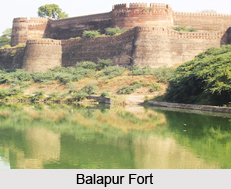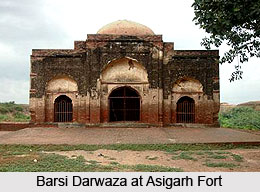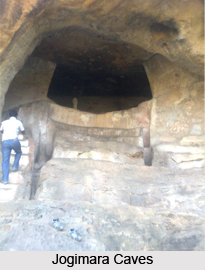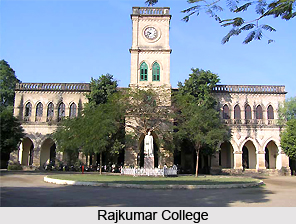 The historical city of Rajkot is the capital of the of the Rajkot district. A number of museums and temples comprise the monuments of Rajkot. It lies 24 miles from Gondal in the Kathiawar peninsula. The founder of the beautiful city of Rajkot is Thakur Saheb Vibhaji Ajoji Jadeja in the year 1612. It was once the capital of the princely state of Saurashtra. The city has also been home to the great Indian Freedom Fighter Mahatma Gandhi. He lived at Rajkot for the early period of his life during which time his father was the Diwan to one of the Saurashtra Nawabs. Until 1947 it was the headquarters of the local British Resident for the Western India States. Today it is an important industrial centre.
The historical city of Rajkot is the capital of the of the Rajkot district. A number of museums and temples comprise the monuments of Rajkot. It lies 24 miles from Gondal in the Kathiawar peninsula. The founder of the beautiful city of Rajkot is Thakur Saheb Vibhaji Ajoji Jadeja in the year 1612. It was once the capital of the princely state of Saurashtra. The city has also been home to the great Indian Freedom Fighter Mahatma Gandhi. He lived at Rajkot for the early period of his life during which time his father was the Diwan to one of the Saurashtra Nawabs. Until 1947 it was the headquarters of the local British Resident for the Western India States. Today it is an important industrial centre.
A number of monuments are found strewn across the landscape of Rajkot. Though not in the form of forts and palaces, these monuments of Rajkot still figure in importance due to their historical significance.
One of the most visited among Rajkot`s attractions is the Kaba Gandhi No Delo. This is the place in Rajkot where Mahatma Gandhi had stayed in the early years of his life. The name has been derived from the name of Mahatma Gandhi`s father who was known as Kaba Gandhi. The construction of the house follows the old and traditional style of architecture used in house building in Gujarat. There is now held an exhibition here which displays the Gandhi Smriti. The Kaba Gandhi No delo has been converted into a museum which displays photographs, items and belongings of the Great Indian leader.
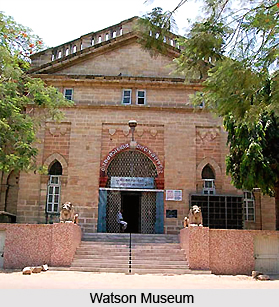
Another major attraction of Rajkot is the Watson Museum. Built in 1888, it has an interesting collection of local paintings, weapons and products. There are contained here precious objects of colonial period of India and history of Rajkot. It is one of the largest museums in the state of Gujarat, and in fact the most valuable in the whole of Saurashtra. Apart from these exhibits, the museum offers state-of-the-art facilities like guide service, reference library etc which makes it a top draw among tourists.
The Rajkumar College was founded in 1870 by Colonel R. H. Keating, VC, for the education of the sons of the local princes and other gentlemen, a sort of Indian Eton. The ground-floor hall is fine. There is a rectangular tower over the east entrance and two circular towers over the west. West of the quadrangle are the houses of the Principal and Vice-Principal. I front of the college building stands the statue of the first principal of the college. The Rajkumar College is still a prestigious public school in Rajkot.
A fort was built here by Masum Khan, the Deputy Faujdar of Junagadh in 1772 AD. Most of the fort is now in ruins and only the gates still remain. Two gates- Raiya Naka and Bedi Naka- were renovated by Sir Robert Bell Booth, the Chief Engineer of a British Agency in 1892. He installed the three storey clock tower there. The Kaisar-i-Hind Bridge was also designed by Booth, who has been responsible for most of the public buildings in the state. The bridge was financed by the Maharajah of Bhavnagar.
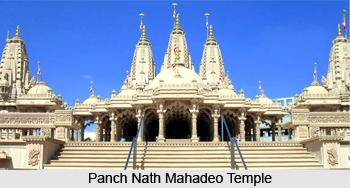 Religious Monuments of Rajkot
Religious Monuments of Rajkot
A number of religious monuments, mainly temples are also found at Rajkot.
Among the most popular religious sites here is the Iswariya Temple. It is a small temple dedicated to Lord Shiva, situated on the outer fringes of town, along the Jamnagar highway. There is a shivling worshipped here which is believed to be Swayambhu. The temple structure is rather beautifully constructed, and the location is one of peace and serenity. There is a pond nearby where people take a dip while offering prayers. The Iswariya temple is of immense spiritual value, and is visited by the locals as well as by tourists. A small fair is organized here every year attended by many.
The Jagat Mandir is another beautiful temple situated in Rajkot. It has been carved in Red stones and is dedicated to Sri Ramkrishna Paramhansa. The Garba Griha or the main shrine has a white marble statue of Bhagwan Sri Ramkrishna seated on a Lotus Vedi. The temple is a rather modern structure built along the principles of all the major religions- Hinduism, Christianity, Buddhism and Islam.
One of the oldest temples in Rajkot is the Panch Nath Mahadeo temple dedicated to Lord Shiva. A number of devotees throng the temple premises everyday. One of the most important events of the temple is the Shiv Maha Puja held in the month of Shraavana.
A number of mandirs were established by Swaminarayan Sampraday, are also located at Rajkot. Known as the Swaminarayan temple, these temples are a part of the Swami`s philosophy on deity worship and theism. The temple is well known for the hand carved stone with which the temple has been constructed. The chief idol at the temple is that of Lord Swaminarayan. It is a white idol of the Lord beautifully clad in a white cloth.
The monuments of Rajkot indicated the very composite nature of the city. Modernity and tradition exist simultaneously here in the form of industrial centres on the one hand and a continuation of Indian religious tradition on the other.


